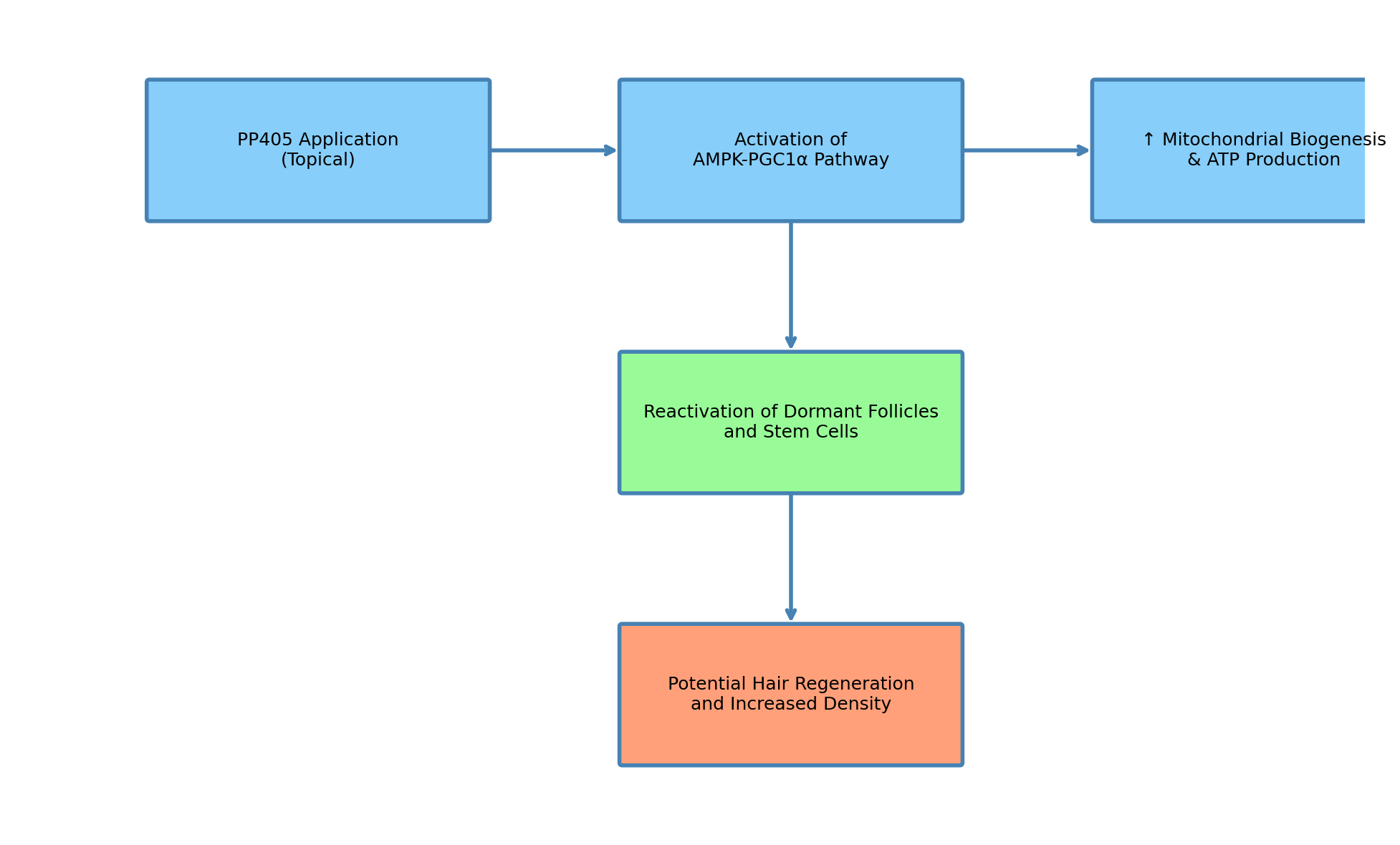Hair loss is a universal concern that affects millions of people around the world—men and women alike. While current treatments like finasteride, dutasteride, minoxidil, and hair transplant surgery offer the best chance for meaningful hair restoration, the search for newer, more effective, and less invasive solutions continues. Among the emerging contenders, PP405 has been generating buzz within scientific circles and hair loss communities for its potential to promote hair regeneration in a novel way.
In this article, we’ll explore what PP405 is, how it works, what the early data suggests, and whether it has the potential to become a game-changing treatment for androgenetic alopecia (AGA). We’ll also discuss why, despite the excitement, the current gold standard remains surgical hair restoration and FDA-approved medications. Finally, we’ll guide you to trusted resources like the Hair Transplant Network Physician Directory and Hair Restoration Network community where you can learn from real patient journeys and connect with expert physicians.
What Is PP405?
PP405 is an experimental topical treatment currently being investigated for its role in reversing hair follicle miniaturization, the hallmark of androgenetic alopecia (male and female pattern baldness). Unlike traditional treatments that target DHT (like finasteride and dutasteride) or prolong the anagen (growth) phase of hair (like minoxidil), PP405 is believed to work by targeting metabolic pathways involved in follicular aging and stem cell exhaustion.
Although publicly available research is still limited, PP405 is being positioned as part of a new class of bioenergetic modulators—compounds that may restore mitochondrial function, boost ATP production, and potentially “re-awaken” dormant hair follicles. In theory, this could provide a new angle in treating hair loss: not by blocking hormones or dilating blood vessels, but by recharging the cellular energy needed for follicles to sustain growth.
How Does PP405 Work?
While full mechanistic data have not yet been published in peer-reviewed literature, early discussions within the scientific community and hair restoration forums suggest that PP405 may act on the AMPK-PGC1α pathway—a cellular energy sensor involved in mitochondrial biogenesis and oxidative stress regulation. If this pathway is indeed central to PP405’s mechanism, it implies several interesting therapeutic effects:
- Increased Mitochondrial Function—Hair follicle stem cells rely heavily on mitochondrial activity. By boosting ATP output, PP405 may help reinvigorate metabolically sluggish miniaturized follicles.
- Stem Cell Activation – Aging follicles often show depletion or quiescence of stem cells. PP405 might stimulate these cells, enabling the regeneration of thicker, terminal hairs.
- Anti-Inflammatory Effects – Chronic low-grade inflammation has been implicated in pattern hair loss. Modulating cellular stress responses may reduce inflammatory markers that contribute to follicular decline.
Vascular Benefits – Though not primarily a vasodilator, improved cellular energy metabolism may indirectly enhance microcirculation, supporting better nutrient and oxygen delivery to follicles.

It’s important to note that all of this remains speculative until rigorous clinical trials validate these effects.
Could PP405 Replace Current Treatments?
Not yet. And possibly not ever—at least not on its own.
Current proven treatments—finasteride, dutasteride, minoxidil, and hair transplant surgery—remain the cornerstone of hair restoration because they are backed by decades of clinical evidence. Finasteride and dutasteride effectively block DHT, the main hormone responsible for miniaturizing follicles in AGA. Minoxidil can extend the growth phase of the hair cycle and has shown reliable results when used consistently. Hair transplant surgery, especially FUE and FUT procedures performed by elite surgeons, offers the most definitive restoration of lost hair.
So far, no new treatment has surpassed or even equaled the efficacy of this combination. That said, PP405 may find a niche as an adjunct therapy—especially if it can:
- Rejuvenate thinning hairs that are not yet dead
- Improve the health of transplanted grafts
- Provide results for patients who cannot tolerate existing medications
If these possibilities are confirmed, PP405 could become a valuable piece of the hair restoration puzzle, especially when combined with existing therapies.
The Future of PP405: Hype or Hope?
The buzz around PP405 is reminiscent of earlier experimental compounds like Breezula, CosmeRNA, and CB-03-01. Some of these showed early promise but failed to deliver consistent, safe, and scalable results. Will PP405 be different?
Early anecdotal reports from patients participating in research or underground experiments suggest subtle improvements in hair texture and density. However, without controlled studies and published peer-reviewed data, it’s far too early to label PP405 as a breakthrough.
The hair loss industry is full of exaggerated claims, and many vulnerable patients fall victim to miracle cures that don’t deliver. As of now, PP405 should be viewed as an exciting experimental therapy, but not a replacement for proven options.
What You Can Do Now: Stick With Proven Solutions
While it's exciting to explore new frontiers like PP405, if you're currently experiencing hair loss, the best approach is to act now using what works:
- Consult a top-tier hair transplant surgeon who can evaluate your scalp under magnification and assess whether you're a candidate for surgery.
- Consider medical therapies like finasteride or dutasteride (for DHT suppression) and minoxidil (for follicular stimulation).
- Combine treatments strategically—many patients see the best outcomes when surgery and medication are combined in a personalized plan.
The Hair Transplant Network Physician Directory recommends only doctors with consistently outstanding results and verified patient reviews. It contains the most qualified and vetted surgeons.
Join the Conversation: Hair Restoration Network
For ongoing discussions about experimental treatments like PP405, real-world patient experiences, before-and-after photos, and candid feedback, we encourage you to join the Hair Restoration Network—the largest and most trusted online community for hair loss sufferers.
You’ll find:
- Real patient journeys and progress photos
- Scientific discussions on new treatments
- Q&A with experts and board-certified surgeons
- Honest advice from people just like you
Conclusion
PP405 may hold potential as an innovative treatment targeting follicular metabolism, but its place in the hair loss arsenal remains uncertain until more data emerges. For now, hair transplant surgery combined with proven medications like finasteride, dutasteride, and minoxidil remain the most effective way to fully restore a balding head.
Stay informed. Stay skeptical. And always consult with trusted, experienced professionals before starting any new treatment.
To take the first step in your restoration journey, visit our Physician Directory and connect with leading surgeons, or explore real stories from real people at the Hair Restoration Network.
Your hair matters—and so does the information you trust.

